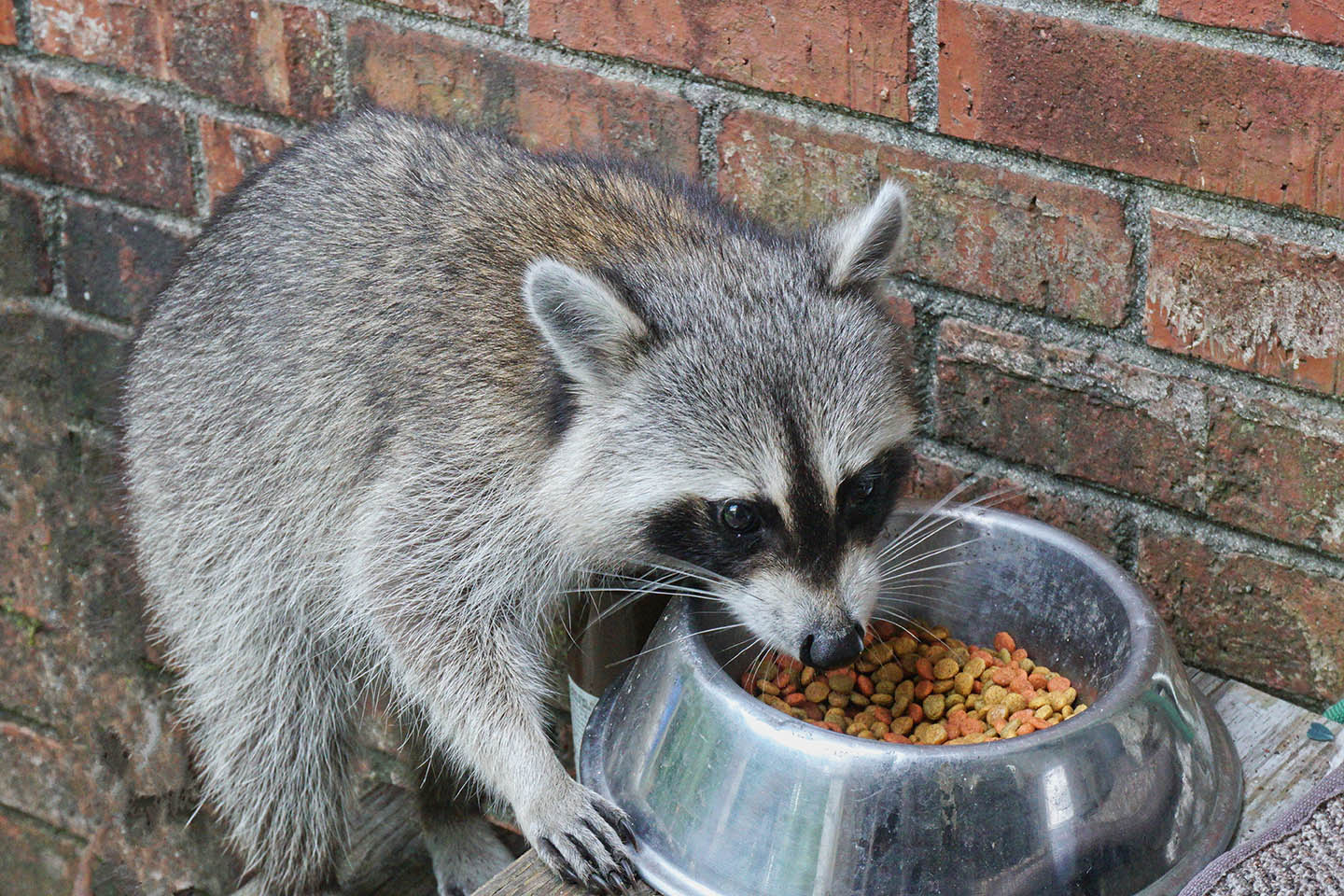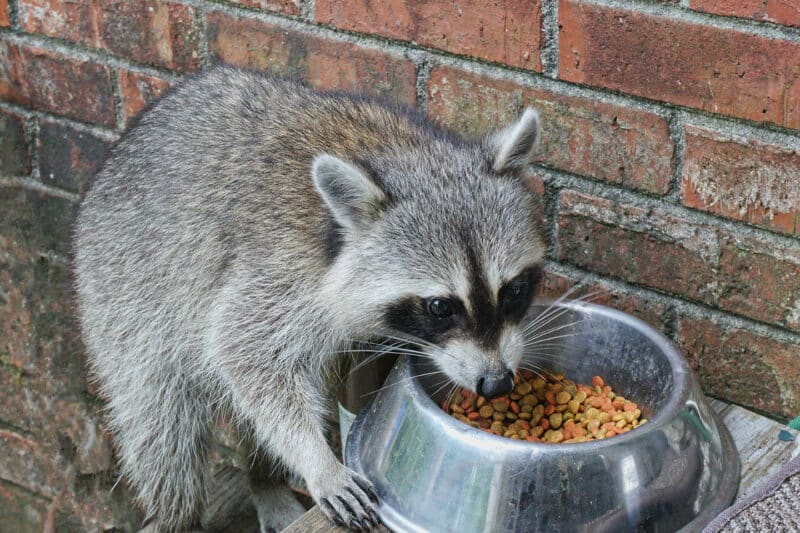If you have an outdoor feeding station for your cats, you might sometimes find that they seem to be eating more food than normal. Or maybe you’ve set up an outdoor feeding station for a few strays and can’t keep up with how much food those cats seem to be getting through.
Perhaps it’s not actually cats that are scoffing all the food, but a raccoon! You can’t blame these little critters for taking an opportunistic nibble of your cat’s food, but raccoons can carry diseases and become aggressive if they run into your cat.
Allowing raccoons to eat all your cat’s food will only encourage them to keep coming back and leave your cats feeling hungry. There’s also the expense of buying all that cat food only for the raccoons to eat it!
We’ve rounded up our seven top tips for keeping raccoons out of your cat’s food.

The 7 Ways to Keep Raccoons Out of Cat Food
1. Only Leave Cat Food Out During the Day
Raccoons are most active at night, so by only putting cat food out during the day, you can reduce the chance of the raccoons eating it instead of the cats. Remove any bowls of leftover food before nighttime, and place them out again the next day.
Your cats will soon get used to the new routine and only expect to find food there during the day. Using this system also reduces the likelihood that your cat will run into a raccoon if they try to eat food at night.
Bear in mind that raccoons can and do move around during the daytime if they feel like it, so this solution might not always be 100% effective.
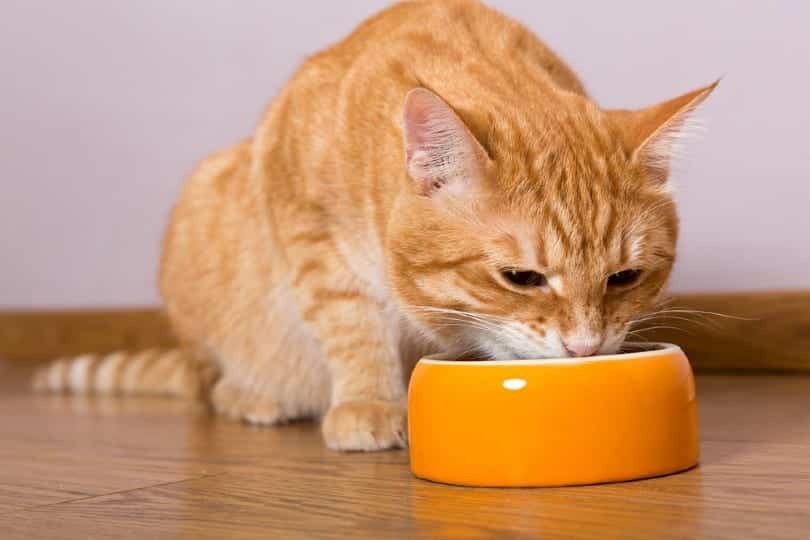
2. Place the Food on an Elevated Platform
While our cats might be excellent jumpers, the good news is that raccoons aren’t so talented in this department. Placing your cat’s food on a platform at least 40” tall can allow cats to gain access but stop raccoons in their tracks. You can also add a roof to provide shelter in bad weather.
Covering the central pole of your platform with smooth plastic or metal will also prevent raccoons from being able to gain purchase if they try to climb up the pole.
3. Feed Your Cat Indoors
Completely removing any traces of cat food from outside can eventually persuade raccoons to go and scavenge for food somewhere else.
It may take your cat a week or so to get used to just eating inside, but they’ll soon adapt. If you’re worried about raccoons trying to gain entry to your home through a cat flap (it has been known to happen!), then installing a cat flap that reads your cat’s microchip or a tag on their collar to allow admittance can be a good solution.
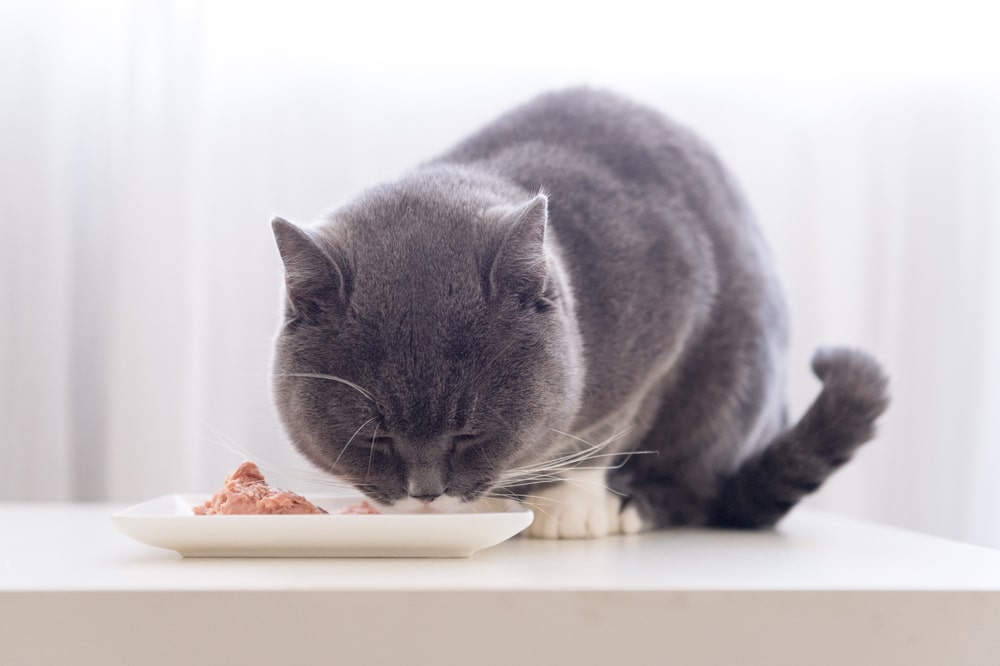
4. Use a Raccoon-proof Feeder
Using an automatic feeder activated by your cat’s microchip or a tag on their collar can be a good solution if you want to leave food outside for your own cat. Make sure you choose a dry location where the feeder will be protected from the elements.
This won’t work for feral cats, although you could try a standard automatic feeder and just set it to open during daylight hours when raccoons are less active.
That said, raccoons are talented at opening (and breaking) items to get to the food inside. They’ve been known to chew through bungee cords securing grill lids, pry off coverings from compost heaps, and pull plastic trash cans to pieces in an attempt to get the food inside. So, if you have a particularly persistent raccoon, they may destroy your outdoor feeder.
5. Fence Your Property
A secure fence is going to be the first step in keeping raccoons out of your property. Mesh fences that continue below ground level for at least 5 inches are the best way to keep raccoons from burrowing under and gaining access to your backyard that way.
You can also use a fence that slopes outward to deter climbing. Some cat owners in areas with a heavy raccoon population use an electric fence that’s switched on at night when the raccoons are more active.
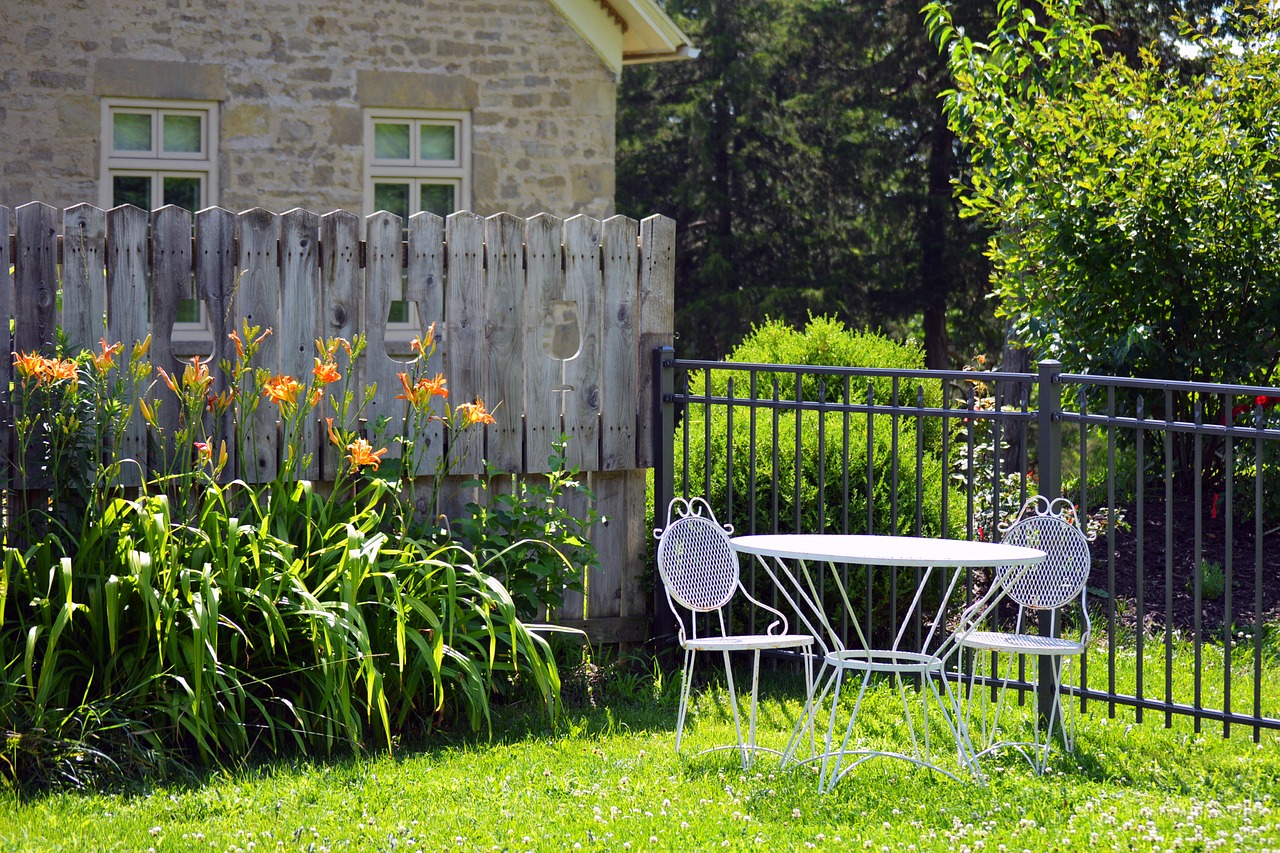
6. Remove Other Food Sources
Raccoons love scavenging and will soon smell if there are any other food sources worth exploring. To a raccoon, food includes trash bags and compost heaps! Using a plastic bin to store your trash bags is a good start, as is covering your compost heap with heavy items or using a plastic compost heap bin with a lid that can be secured.
7. Speak to a Professional
If you’ve tried all the above tips and still have raccoons regularly visiting your backyard, it might be time to call in the professionals. They’ll be able to survey your property and place traps to catch and remove raccoons if necessary.
Conclusion
There you have it! Hopefully, one or several of the above tips will help keep raccoons away from your cat’s food. If none of the tips seem to help, speaking to a professional may be your best bet.
- You might also want to know: Can Cats and Raccoons Mate? Vet-Approved Facts & FAQ
Featured Image Credit: James R Poston, Shutterstock

